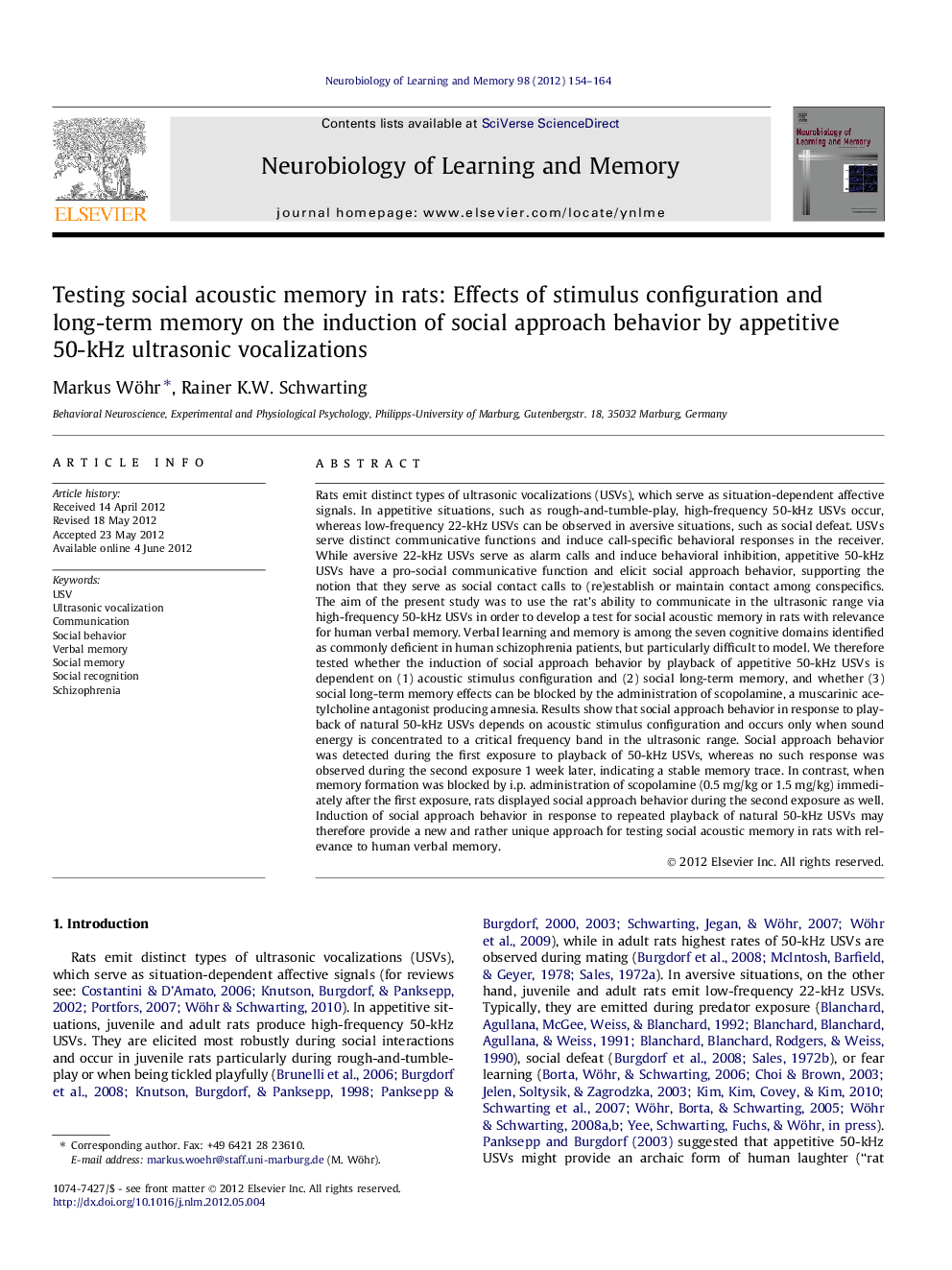| کد مقاله | کد نشریه | سال انتشار | مقاله انگلیسی | نسخه تمام متن |
|---|---|---|---|---|
| 936693 | 1475179 | 2012 | 11 صفحه PDF | دانلود رایگان |

Rats emit distinct types of ultrasonic vocalizations (USVs), which serve as situation-dependent affective signals. In appetitive situations, such as rough-and-tumble-play, high-frequency 50-kHz USVs occur, whereas low-frequency 22-kHz USVs can be observed in aversive situations, such as social defeat. USVs serve distinct communicative functions and induce call-specific behavioral responses in the receiver. While aversive 22-kHz USVs serve as alarm calls and induce behavioral inhibition, appetitive 50-kHz USVs have a pro-social communicative function and elicit social approach behavior, supporting the notion that they serve as social contact calls to (re)establish or maintain contact among conspecifics. The aim of the present study was to use the rat’s ability to communicate in the ultrasonic range via high-frequency 50-kHz USVs in order to develop a test for social acoustic memory in rats with relevance for human verbal memory. Verbal learning and memory is among the seven cognitive domains identified as commonly deficient in human schizophrenia patients, but particularly difficult to model. We therefore tested whether the induction of social approach behavior by playback of appetitive 50-kHz USVs is dependent on (1) acoustic stimulus configuration and (2) social long-term memory, and whether (3) social long-term memory effects can be blocked by the administration of scopolamine, a muscarinic acetylcholine antagonist producing amnesia. Results show that social approach behavior in response to playback of natural 50-kHz USVs depends on acoustic stimulus configuration and occurs only when sound energy is concentrated to a critical frequency band in the ultrasonic range. Social approach behavior was detected during the first exposure to playback of 50-kHz USVs, whereas no such response was observed during the second exposure 1 week later, indicating a stable memory trace. In contrast, when memory formation was blocked by i.p. administration of scopolamine (0.5 mg/kg or 1.5 mg/kg) immediately after the first exposure, rats displayed social approach behavior during the second exposure as well. Induction of social approach behavior in response to repeated playback of natural 50-kHz USVs may therefore provide a new and rather unique approach for testing social acoustic memory in rats with relevance to human verbal memory.
► Appetitive 50-kHz ultrasonic vocalizations (USVs) induce social approach in rats.
► Social approach towards 50-kHz USVs depends on acoustic stimulus configuration.
► Social approach occurs during the first but not repeated exposures to 50-kHz USVs.
► Lack of social approach during repeated exposures is due to social acoustic memory.
Journal: Neurobiology of Learning and Memory - Volume 98, Issue 2, September 2012, Pages 154–164